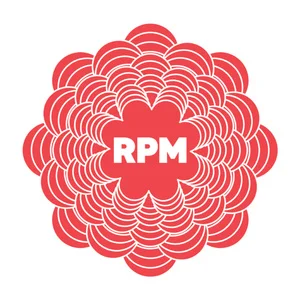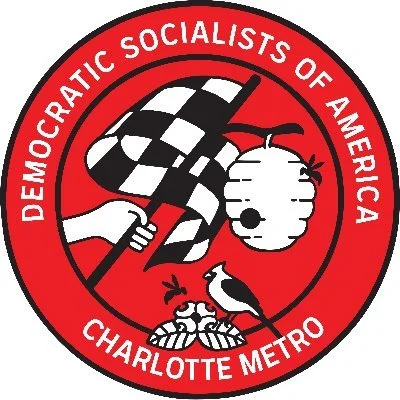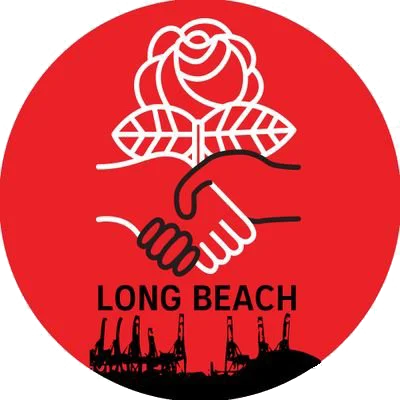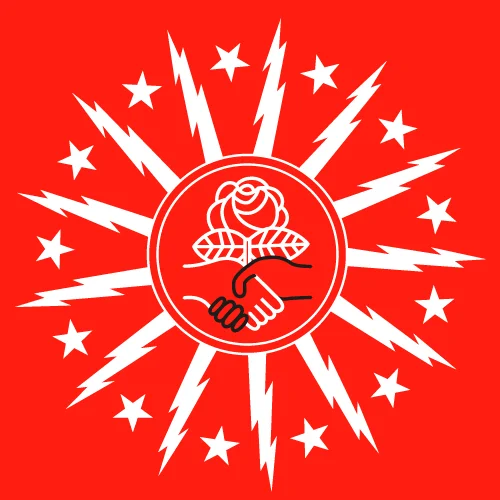

Lutheran climate organizer Shay O'Reilly on demonic forces, white supremacy and climate change

The Battle at Hudson Yards


Charlotte Metro DSA statement: Bernie Sanders Endorsement
At our March 3rd meeting the members of Charlotte Metro DSA engaged in the debate facing all of our fellow 60,000 comrades: whether to affirm the demands of the National Political Committee (NPC) and provide financial and labor support for Bernie Sanders’ presidential campaign, and more broadly, what Bernie Sanders and his bid for president means to the burgeoning and resurgent Socialist movement in the United States. Naturally, as good Socialists, we held a structured and comradery debate about what our role nationally is in relation to electoral politics and what our capabilities as a chapter are to affect change locally through elections and campaigning. Our conversation about local needs and capabilities transitioned to why the national debate was happening so early in the 2020 election cycle, and was seemingly predetermined by the NPC, when an opportunity to decide this more democratically and transparently is only months away.
Regarding the endorsement for Bernie Sanders for President set forth by DSA NPC, Charlotte Metro DSA decided to delay our decision whether to endorse in order to better focus on issues that affect our local communities and allow us to build a broader working class movement in the Charlotte Metro area. We also call on the NPC not to endorse at this time, especially under the current conditions of the endorsement presented. This endorsement is too important and impactful to be decided by so few individuals and without the transparency necessary for a democratic organization. Additionally, we are concerned that in its current form the endorsement will pull too much money away from other more necessary DSA-led endeavors to continue to build our movement, particularly by chapters outside of major metropolitan areas. Due to the lack of horizontal participation and likely cost to Charlotte Metro DSA, we cannot at this time and in good conscience endorse Bernie Sanders for President, and we ask for the NPC to call off its vote for an endorsement and to instead let it be determined at the General Convention this August in Atlanta.
In Solidarity, CLTMDSA

Caban for Queens
Today’s show is about radically re-imagining criminal justice, and approaching it from a socialist and anti-racist perspective. We’ll talk about NYC-DSA endorsed Tiffany Cabán's campaign for Queens DA and what she has the potential to do.




Emma Goldman Reading Group Syllabus
-
Introduction: April 13, 12pm, Grindhaus
a. Emma Goldman on Wikipedia
b. What I Believe (1908)
c. A New Declaration of Independence (1909)
d. Anarchism: What It Really Stands For (1910) -
Feminism: May 18, 12pm, Grindhaus
a. Anarchy and the Sex Question (1896)
b. The Tragedy Of Women’s Emancipation(1906)
c. The Traffic in Women (1910)
d. Woman Suffrage (1911)
e. Marriage and Love (1911) -
Religion: June 15, 12pm, Grindhaus
a. The Failure Of Christianity (1913)
b. The Philosophy Of Atheism (1916)
c. The Hypocrisy Of Puritanism (1917)
d. Emma Goldman and the Soul of Anarchism , by Kim Domenico (2017) -
State Repression: July 20, 12pm, Grindhaus
a. Patriotism, a Menace to Liberty (1911)
b. Prisons, a Social Crime and Failure (1917)
c. Meeting of No Conscription League transcript (1917)
d. The Individual, Society and the State (1940) -
My Disillusionment in Russia: August 17, 12pm, Grindhaus
a. My Disillusionment in Russia (1923)

The Democratic in DSA


2018 Year in Review
Hello Charlotte Metro DSA Members,
2018 was our second year in existence, and one that saw a lot of change and action. Firstly, our charter and bylaws were accepted from DSA National and we transitioned from an organizing committee to an official chapter of the Democratic Socialists of America. With official chapter status, we were able to hold our first officer elections in November, and now we can start the process to become a non-profit, open a bank account and receive a percentage of our dues back from national’s coffers.
Last year, we hosted several political education events to increase consciousness around issues important to building working class solidarity and power in our community. In January we hosted Medicare for All expert, writer and fellow DSA member, Tim Faust, for a rousing speech and Q and A session about Health Care justice. In May we put on a labor week with help from local unions and hosted two events at the IBEW hall. The first of the events was a panel discussion with local union officers and labor organizers, where the speakers dissected local peculiarities of organizing labor in the South and problems facing unions in Charlotte. To cap off the week we hosted the creators of the documentary “Union Time” about unionization of a Smithfield plant in eastern North Carolina.
Mutual aid is also an important part of building working class power. Our chapter hosted 6 brake light clinics last year, because broken or burnt out taillights are one of the most common reasons for traffic stops. By offering free light changes, we can help folks in marginalized and exploited communities avoid police interaction that can lead to arrest or violence. We also assisted Charlotte Center for Legal Advocacy in their upkeep and maintenance of their office space so they can continue advocating for their clients. Helping CCLA allows Charlotte Metro DSA to increase local ties and help out a wonderful organization that offers legal assistance to the most vulnerable in our community.
To continue building an effective chapter, many of our members have gone to regional trainings in Atlanta, Asheville and Knoxville. We have learned skills to help us organize our membership, develop leadership in the chapter and assess obstacles to change locally. These trainings also led to the creation of the Outreach and Retention Committee to continue these lessons and build a sustainable and effective chapter.
There are already many plans in motion for 2019, and more to come. Housing will be our chapter’s focus issue in 2019, and in February we had our first Housing Committee meeting. In less than 18 months, the RNC will be in our city and we have begun strategizing how to be most effective during the convention. This year we will also have our first May Day picnic to celebrate International Worker’s Day. There will certainly be more to come!

February 19th: Housing Justice
New York is in a housing crisis, but 2019 presents a rare opportunity to turn the tide, ending evictions, homelessness, and fight the power of abusive landlords. This #TenantTuesday, RPM sits down with activists on the front-lines of the fight for housing justice.
Tune in to hear @DR0DRIGUEZ and @ceaweaver have an amazing conversation about this fight that affects everyone.

February 12th: The Strike Wave is Coming to New York!
Jack and Lee discuss the recent upsurge in Social Reproductive Labor organizing, with teacher and nurses on the front lines.